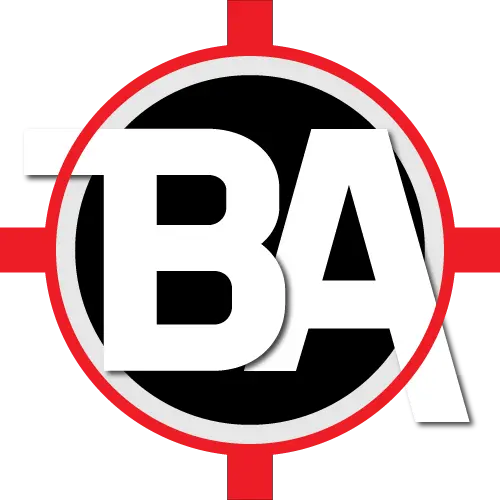
Tired of miscommunication and project delays? Discover how a strong Software Requirements Specification (SRS) can transform your software development process. Learn the secrets to clear, concise, and complete SRS creation for project success.
Introduction #
Have you ever experienced chaos in software development due to unclear requirements?
If the Business Analyst does not provide clear and complete requirements, the developers will implement it according to what they interpret and not what the end user wants. Some wise developers may ask questions to clarify it but again it will cause an unnecessary delay.
Unclear requirements lead to confusion, wrong implementation, delays in meeting deadlines, defects, waste of resources, and all that eventually makes the user (client) unhappy.
The solution to this problem is the clear and strong “Software Requirements Specification”, called SRS.
What is an SRS? #
A Software Requirements Specification (SRS) is an elaborated specification of the following elements of software:
- Business requirements (What needs to be done) and the Value it should provide for the end users
- Functional solutions of requirements (How it should be done)
- Non-functional requirements such as Performance, Security, Audit, etc.
- Project Scope
It is a single source of truth that provides a complete picture of a software system.
SRS is prepared by the Business Analyst primarily for the Development and Quality Assurance (Testing) teams to estimate, implement and validate (test) the business requirements. It can also be referred by any stakeholder within the project or outside the project to get information about the software implementation.
An SRS can be in the form of a Document containing multiple requirements or in the form of individual user stories. This article focuses more on the SRS Document and best practices to produce a clear and complete SRS document.
If you want to know more about the User Stories, take a look at this article.
A well-written SRS ensures that the requirements are correct, and complete leading to the delivery of a valuable software increment to the end users.
The Problem: The Cost of Unclear Requirements #
The business stakeholders, who provide business requirements, always looking to maximize the potential of business by making a change to the software and how that change adds value to their clients. They are not specific about how a particular requirement is implemented technically.
A business requirement goes through various phases of analysis and development before a requirement gets delivered to the users. It’s the responsibility of a business analyst to ensure that the requirement gets implemented correctly and delivers the expected outcome and value.
If a Business Analyst makes any mistake in requirement analysis and specification, it leads to unclear requirements that would cause serious problems in the project such as:
- Miscommunication between stakeholders and developers.
- Scope creep and feature bloat.
- Missed deadlines and budget overruns.
- Frustrated clients and unhappy teams.
Remember, a mistake or ambiguity in SRS leads to a defect in the software if it’s not rectified.
Let’s take an example of a requirement that’s specified in the SRS:
“As soon as a buyer places an order, send an email notification to the buyer containing the invoice and order information to acknowledge the order.”
This is not a clear requirement since there are many interpretations and missing information such as:
- From which email account, the email should be sent?
- What should be the subject of the email?
- Whether an invoice should be attached to the email, provide a link to the invoice or put the entire invoice in the email itself?
- What information related to the order should be included in the email?
- What is the layout of the email? Should it follow any standard email template?
- Is it required to track whether a buyer has opened the email?
- What should happen if email delivery is failed?
When developers receive this requirement, there can be 2 situations:
- Developers do not clarify it further with BA and jump to implement it according to their understanding.
- For example, it will send an email notification from any support email address to the buyer with the subject = “Thanks for Your Order”, order number and list of order items are mentioned in the email body, and the invoice is attached. Also, the email signature is missing.
- When QA tests this change, they will raise many defects based on their understanding leading to conflict with developers. They will reach out to BA to decide whether the defect is valid.
- BA checks SRS, and business requirements and realizes the mistakes in SRS. He/she will contact stakeholders, clarify requirements, amend the SRS, get it reviewed by stakeholders, and finally resolve the conflict between Developers and QA.
- See, how much time is wasted due to unclear requirements in SRS. A project with strict deadlines would suffer a lot due to this.
- When QA is in progress, developers are busy working on new changes, BA also gets onto another task and in between everyone has to rectify these mistakes. It becomes tough to handle the situation and they will try to rectify it in a hurry causing further problems.
- Finally, when this change gets to the client, they will be unhappy since it’s not the way they wanted.
- Developers diligently ask further questions to BA to clarify the requirements and try to gather all the missing information such as email template, subject, order information etc.
- This is a little better than the previous situation because the mistakes are identified before starting the development.
- To answer the developer’s questions, the BA need to re-work on analysis part to clarify the questions with stakeholders, get all the information, update the SRS, get it reviewed by stakeholders and finally provide the updated SRS to the developers.
- So, it still causes some wastage of the resources.
That’s a lot of unnecessary re-work making everyone’s life difficult.
The Solution: The Power of a Strong SRS #
Someone rightly said – “Well Begun Is Half Done”.
If the Business Analyst produces a strong SRS, it will never fail and hit the target for sure.
Key characteristics of a strong SRS document #
- Clear - Each statement should be crystal clear i.e. only one interpretation
- Concise – It should include exactly what is required. Nothing more. Nothing less.
- Complete – It should not miss any functional requirement, and cover all the possible scenarios affecting each requirement.
- Include textual and visual examples to elaborate complex realities.
- Address all the impacted Non-functional requirements i.e. performance, security, audit, etc.
- Address all the assumptions and constraints
- Consistent – It should follow the standard template as provided by the organization. The structure of the SRS should be consistent.
Benefits of a Well-Defined SRS #
- Improved communication and collaboration.
- Reduced risk of errors and rework.
- Clear project scope and realistic expectations.
- Increased project efficiency and on-time delivery.
- Satisfied stakeholders and a successful project outcome.
Getting Started: How to Craft a Winning SRS #
Creating an SRS is the last task of the Requirement Analysis and the important deliverable of a Business Analyst that lays a foundation for software or incremental software changes.
The quality of an SRS depends on the quality of Requirement Analysis.
The SRS Development Process: #
- During the Requirement Elicitation phase:
- Think about all possible scenarios affecting the requirement and ask relevant questions to fully understand it from all perspectives.
- Gather all the necessary information and data related to the requirement.
- Relate the requirements with business goals to make sure that what value should be delivered to the business when the requirements are implemented.
- Confirm elicitation results (elicited requirements) and high-level solutions with the stakeholders
- Clearly define the scope of the change (what is included and what is not included).
- Prioritize requirements to ensure that the most critical ones will be implemented first.
- Discuss the requirement and solution with the Development team to validate the solution and make changes to the solution if required
- During the Requirement Analysis phase:
- Map the requirement with the existing system to do the impact analysis i.e. what all areas of the system will be affected when the change is made.
- Create appropriate visual models (diagrams, wireframes etc.) to explain and elaborate requirements to the developers clearly
- Identify all the assumptions and constraints (limitations) related to the solution
- Identify all the non-functional requirements
- Start Creating the SRS with the help of the information that’s collected as part of the Elicitation and Analysis phases. Follow the standard template for SRS that should specify the following details:
- Product Scope – Overview of the product along with the strategic importance, benefits, objectives and goals.
- Specify each Functional requirement along with it’s solution details, business validations, supporting data, visual model diagrams, wireframes, scenarios, acceptance criteria, examples and everything that’s required to implement the requirement.
- Specify each Non-functional requirement with their validation criteria
- Perform a self-review of the SRS before publishing to a wide audience to make sure that it’s complete, concise, clear and consistent.
Essential Tools for creating SRS #
- Microsoft Word
- Google Doc
- PM Tool such as JIRA where you can specify the requirement in the form of a User Story in a ticket.
SRS Templates and SRS Examples #
It’s highly recommended to follow a standard template to ensure the consistency and completeness of the document since a template covers all the aspects of software development.
Some organizations follow the SRS template from IEEE and some follow their standard template based on the organizational policies.
The Global Standard Template for SRS Document by IEEE #
IEEE provides Recommended Practices for Software Requirements Specifications.
Here is a brief outline of the SRS Template from IEEE:

General Standard Template for SRS Document #
Based on my experience of specifying requirements for hundreds of projects, I use the following well-defined SRS template and it helped me succeed in every project.

This image is just a preview of the first page of the template. If you want the full template, just enter your email below and we’ll send you the full template over email.
SRS Document Example #
The following is a full fledged SRS document to develop a hypothetical software system. This SRS document is prepared according to the General Standard SRS Template as mentioned above.

This image is just a preview of the first page of the document.
Learn More About This SRS Example Document
Conclusion #
A great building can be constructed based on a strong foundation and robust architecture. Similarly, great software can be developed based on a strong SRS and robust technical architecture.
A business analyst must master the techniques of creating a strong SRS that’s clear, complete, concise and consistent to make the project successful.

